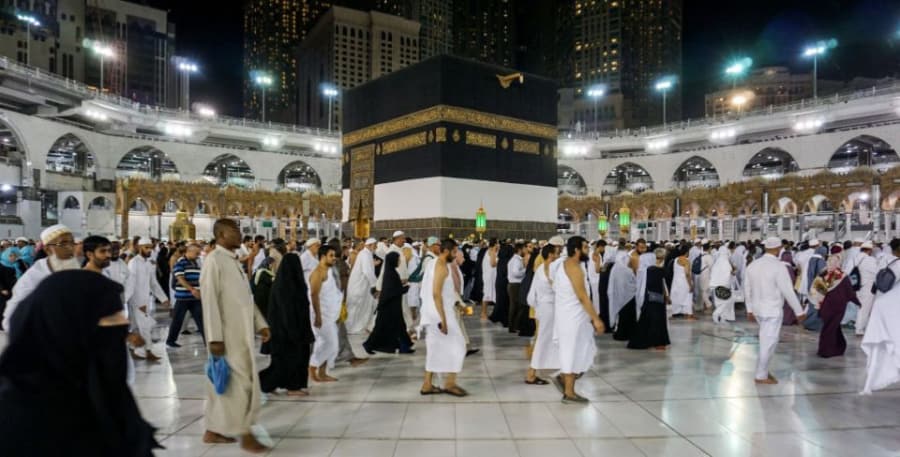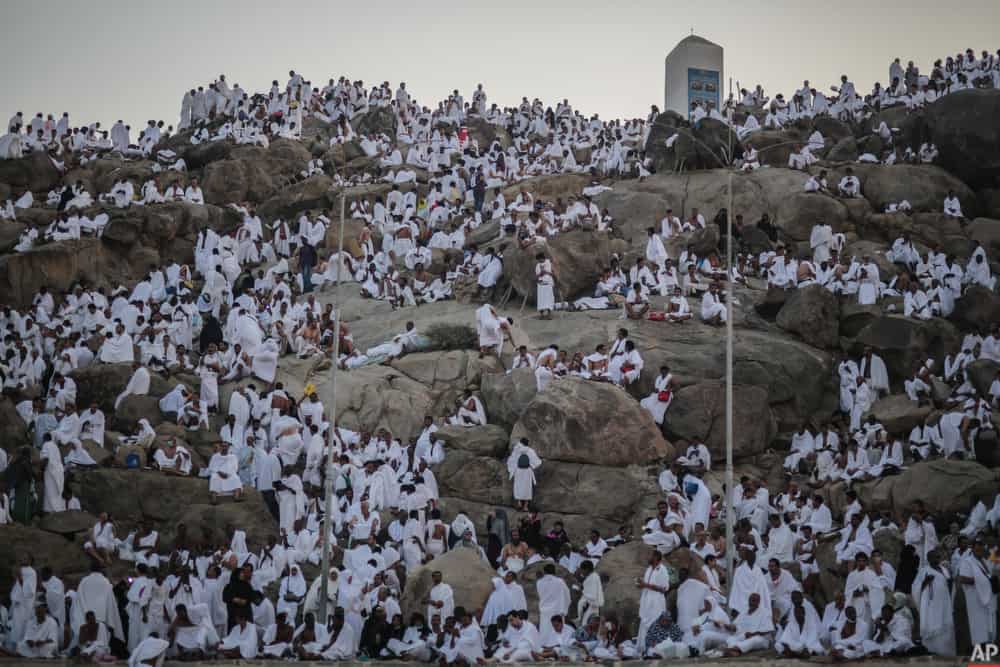

Hajj is an Arabic word which means “to intend a journey”. Hajj is the fifth pillar of Islam, which every Muslim must perform at least once in his or her lifetime, provided they are financially and physically able to do so. All Muslim’s willingly visit this sacred place because ALLAH has given this place a priority over any other place in the world. As said in Quran:
“And complete the Hajj or Umrah in the service of Allah”. (Al-Baqarah, Chapter #2, Verse # 196)
1. State of Ihram (8th of Zil Hajj)As the word Ihram originates from the Arabic term “Tahreem”, which means prohibited. Ihram relates to the state of purity and equality before God (Allah) which Muslim’s enter before going on Hajj.
The very first step of hajj is “Ihram” for any pilgrim wishing to perform hajj. In this step of performing hajj the pilgrims prepare one’s soul, mind and body for journey to the Almighty God. Entering the stage begins from the Miqat, or a place that is outside the pilgrimage area. On the eighth of Zil Hajj, pilgrims enter Ihram, which entails

The pilgrims then move from Mina to Arafat just after observing fajar prayer. They spend a whole day in Arafat which is also known as the "Day of Arafat, “till the sun set and asking Allah for forgiveness. After sunset on the Day of Arafat, the pilgrims leave and travel to a nearby open plain called Muzdalifah, roughly halfway between Arafat and Mina. There they spend the night sleeping on the ground beneath the open sky, praying and collecting small stone pebbles to be used for the next day. All the Muslim’s around the world usually fast on this day.
3. Day 3 of Pilgrimage (10th of Zil Hajj)The 10th of Zil hajj is also is known as yawm-ul hajj al-Akbar (The big hajj day). In this day all the pilgrims perform the Rami ceremony, during which they throw the stone pebbles at three pillars that represent the temptations of Satan. The three pillars are Jamrat al-‘Aqaba (at the narrow pass of al-‘Aqaba, and the largest), Jamrat al-Wusta (the middle one), and Jamrat al-Sughra (the small one). The pillars are set separately in large depressions, and participants walk down a corridor to throw the pebbles.
Following the stoning, male pilgrims must trim their hair and women must cut the tips of their hair. To memorize the story of Hazrat Ibrahim (AS) and Hazrat Ismail (AS) animals are often slaughtered. Traditionally pilgrims slaughtered the animals themselves, however, today pilgrims only buy vouchers which allow an animal to be slaughtered in their name. The meat is then distributed among poor people around the world. This is a symbolic act known as the Eid al Adha. This is the second of the two major holidays in Islam each year.

The pilgrims repeat stoning on 11th and 12th of Zil hajj at Mina. The stoning ritual is repeated by throwing stones at three pillars but this time throwing seven pebbles at each of the three pillars. When their time in Mina is finished, the pilgrims return to Mecca to perform the final circulation of the Kaaba, a "farewell" tawaf.
May Almighty Allah accepts the Hajj of all those who are performing this year and also call us to visit His house the Holy Kaaba! Ameen
Try 3 Days Free Classes


 Information
InformationOver the years, QuranReading.com has established itself as a respected brand among parents who wish to teach their children about Quran. With ever increasing number of customers all over the globe.
Ashburn, Virginia, USA